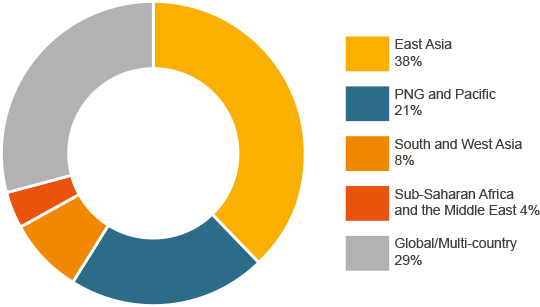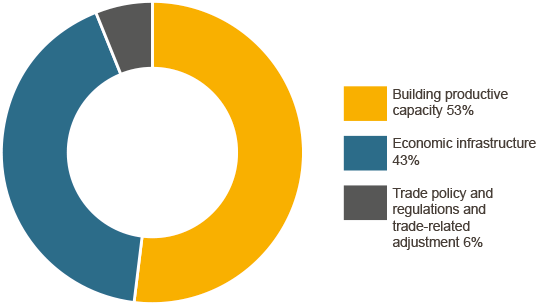Aid for trade addresses developing countries' internal constraints to trade, such as cumbersome regulations, poor infrastructure and gaps in workforce skills.
The OECD categorises aid for trade as development assistance that supports: :
- trade policy
- economic infrastructure
- building productive capacity, and
- trade-related adjustment.
The 2015 Global Aid for Trade Review highlighted strong support for continuing the global Aid for Trade Initiative launched at the 2005 Hong Kong World Trade Organization (WTO) Ministerial Conference. Donor support and demand for aid for trade is increasing. Aid for trade efforts are focused on trade facilitation and reducing trade costs, as well as helping small and medium sized enterprises access global value chains and advancing the economic empowerment of women through trade.
Australia's aid for trade
The Strategy for Australia's Aid for Trade Investments, released on 1 July 2015, provides a framework to ensure future aid for trade investments are effective in helping developing countries participate in the global trading system and make a real impact on the lives of the poor. The Australian Government has set itself a target of increasing aid for trade expenditure to 20 per cent of Australia's aid budget by 2020.
In 2014-15, the value of Australia's aid for trade investment is estimated to be $823 million. Of this, 38 per cent was invested in East Asia, 29 per cent in global or multi-country initiatives, and 21 per cent in the Pacific (including Papua New Guinea). Approximately 51 per cent was directed towards building productive capacity (including in agriculture), 43 per cent towards improving economic infrastructure (including transport and storage), and 6 per cent towards streamlining trade policy and regulation.
Aid for trade by region



